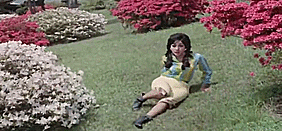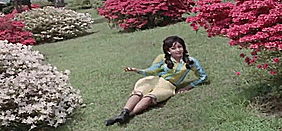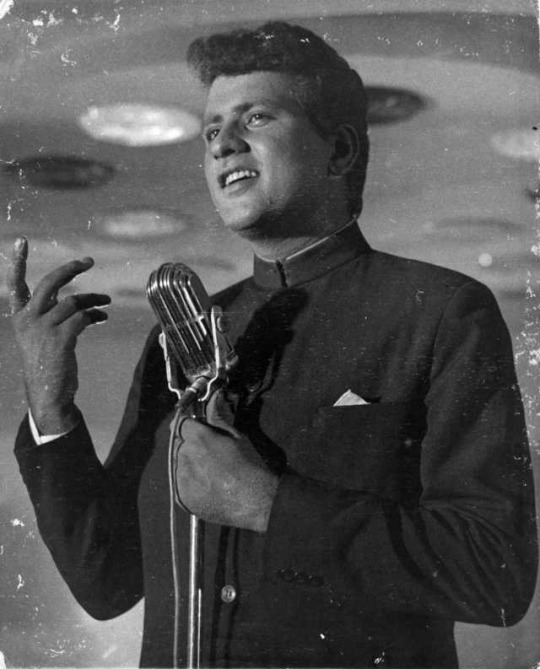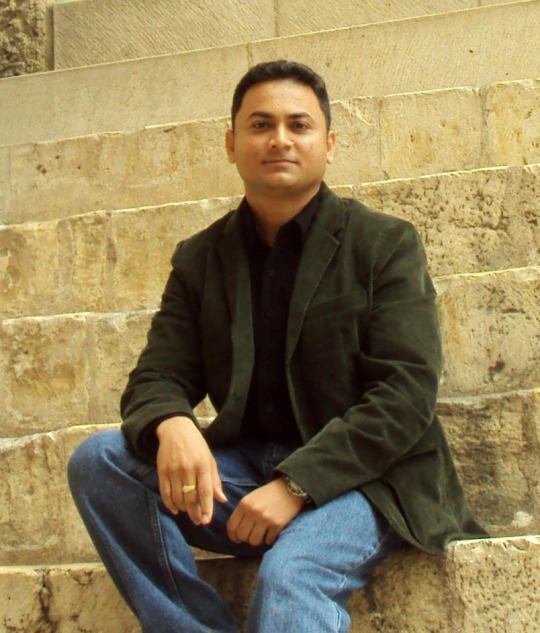#Lata Mangeshkar and Mala Sinha Songs
Explore tagged Tumblr posts
Text
Milti Hai Zindagi Mein Mohabbat | Lata Mangeshkar | Ankhen 1968 Songs | ...
0 notes
Text
Lyrics Meri Tamannao Ki Takdeer Tum (Female)
Lyrics Meri Tamannao Ki Takdeer Tum (Female)
Lyrics in English | Meri Tamannao Ki Takdeer Tum (Female) | Holi Ayee Re (1970) | Mukesh Meri Tamannao Ki Takdeer Tum Sanwaar DoPyaasi Hai ZindgiTum Mujhe Pyar Do (2)Meri Tamannao Ki Takdeer Tum Sanwaar DoPyaasi Hai ZindgiTum Mujhe Pyar Do (2)………….. Pyar Ka Akaal PadaSaare Hi Jag Me (2)Pyar Ka Akaal PadaSaare Hi Jag MeDhokhe Hain Har Dil MeNafrat Hai Rag Rag MeSab Ne Duboya Hai MujhePaar Tum…

View On WordPress
#Antakshari Songs from M#Bollywood Songs of 1970#Dual Version Bollywood Songs#Hindi Song Lyrics Starting from M#Hindi Songs of 1970#Lata Mangeshkar and Mala Sinha Songs#Lata Mangeshkar Sad Songs#Lata Mangeshkar Songs#Lyrics Starting from M#Mala Sinha Songs#Songs Composed by Kalyanji–Anandji#Songs from Holi Ayee Re (1970)#Songs Starting from "M"#Songs Written by Indeevar
0 notes
Photo






तन्हा ना कट सकेगे जवानी के रास्ते, पेश आएगी किसी की ज़रूरत कभी-कभी 💖
𝓐𝓪𝓷𝓴𝓱𝓮𝓷 1968
#mala sinha#bollywood#Retro Bollywood#vintage#dharmendra#classic#old hindi movies#hindi songs#lata mangeshkar superhit songs#lata mangeshkar#mohd rafi#kishore#old is gold#classic movies#superhit movies#india#hindi cinema#aankhein#mygifs#myedits#bollywoodedit#evergreen
24 notes
·
View notes
Text
Aap Ki Nazron Ne Samjha Lyrics In English with Translation
Aap Ki Nazron Ne Samjha Lyrics In English with Translation
Aap Ki Nazron Ne Samjha Lyrics About the song and movie: Check out Aap Ki Nazron Ne Samjha Lyrics In English with Meaning, from the movie Anpadh. It is one of the classic songs of the ’60s. The story of the movie Anpadh revolves around the importance of girl education in India, and it features Dharmendra, Mala Sinha, and Balraj Sahni. Aap Ki Nazron Ne Samjha Lyrics are written by Raja Mehdi Ali…

View On WordPress
#1962#Anpadh#Balraj Sahni#Dharmendra#Hindi Classic#Lata Mangeshkar#Love Songs#Mala Sinha#Mohan Kumar#Old Songs#Raja Mehdi Ali Khan#Romantic Songs
0 notes
Text
CHILDREN'S DAY SPECIAL
Hi everyone, Welcome to my website and have fun. 😊😊
A BEAUTIFUL BOLLYWOOD SONG ABOUT CHILDREN. Hello Friends, I would love to dedicate this song to all the little angels across the world. This song explains why children are simply the best. Sung by Late Lata Mangeshkar for the film Do Kaliyaan, we could see the superb performance by Neetu Kapoor ( as a child artiste) along with the heroine Mala Sinha ( who plays her mother) and Biswajeet as the…
View On WordPress
0 notes
Photo

Wishing Manoj Kumar many happy returns of the day on his 81st birth anniversary. Manoj Kumar (born Harikrishna Giri Goswami on 24 July 1937) is an award-winning actor and director in Bollywood. He is remembered for his films Hariyali Aur Raasta, Woh Kaun Thi?, Himalaya Ki God Mein, Do Badan, Upkar, Patthar Ke Sanam, Neel Kamal, Purab Aur Paschim, Roti Kapda Aur Makaan, and Kranti. He is known foracting in and directing films with patriotic themes, and has been given the nickname "Bharat Kumar". In 1992, he was honoured with the Padma Shri by the Government of India. India's highest award in cinema, the Dadasaheb Phalke Award, was bestowed him in 2016. As a youngster, he admired Dilip Kumar, Ashok Kumar and Kamini Kaushal and decided to name himself Manoj Kumar after Dilip's character in Shabnam (1949). After making a little-noticed début in Fashion in 1957, Manoj landed his first leading role in Kaanch Ki Gudia (1960) opposite Saida Khan. Piya Milan Ki Aas and Reshmi Roomal followed, setting the stage for the Vijay Bhatt-directed Hariyali Aur Raasta (1962) opposite Mala Sinha. Kumar then appeared with Sadhana in Raj Khosla's Woh Kaun Thi (1964), and reunited with Vijay Bhatt and Mala Sinha in Himalaya Ki God Mein (1965). Manoj Kumar and Raj Khosla repeated their successful Actor-Director partnership with the film Do Badan, which was remembered for many reasons including Raj Khosla's direction, Manoj Kumar and the heroine Asha Parekh's excellent display of histrionics, an outstanding musical score by Ravi, immortal songs by the lyricist Shakeel Badayuni, among others. In the 1960s his successful films included romantic films like Honeymoon, Apna Banake Dekho, Naqli Nawab, Paththar Ke Sanam, Sajan, Sawan Ki Ghata and social films like Shaadi, Grihasti, Apne Huwe Paraye, Pehchaan, Aadmi and thrillers like Gumnaam, Anita, Woh Kaun Thi. Kumar's image as the patriotic hero started with the 1965 film Shaheed, based on the life of Bhagat Singh, the Independence revolutionary. After the Indo-Pakistani War of 1965, Prime Minister Lal Bahadur Shastri asked him to create a film based on the popular slogan Jai Jawan Jai Kissan (hail the soldier, hail the farmer). The result was Kumar's magnum opus and his directorial debut, Upkaar (1967). In it, he played both a soldier and a farmer. The film was also noted for the famous song Mere Desh Ki Dharti, written by Gulshan Bawra, composed by Kalyanji-Anandji and sung by Mahendra Kapoor. Upkaar was a hit and won Kumar his first Filmfare Best Director Award. Manoj returned to patriotic themes in Purab Aur Paschim (1970), in which life in the East and West are juxtaposed. In 1972, he starred in Be-Imaan (for which he won the Filmfare Best Actor Award) and directed and starred in Shor (1972). The latter, opposite Nanda, was not a huge box office success on its release but has gained cult status over the years. It featured the memorable song Ek Pyar Ka Nagma Hai, a duet by Lata Mangeshkar and Mukesh, which was composed by Laxmikant Pyarelal and written by Santosh Anand. In the mid-1970s Kumar starred in three hit films: Roti Kapda Aur Makaan (1974) was a social commentary featuring an all-star cast including Zeenat Aman, Shashi Kapoor and Amitabh Bachchan that won him his second Filmfare Award for Best Director; Sanyasi (1975) had Kumar and Hema Malini in the lead roles of a religious-themed comedy; and Dus Numbri (1976) also gave Kumar and Hema top billing. In 1981, Kumar reached the peak of his career when he got the opportunity to direct his idol, Dilip Kumar, as well as star in Kranti, a story about the struggle for Indian independence in the 19th century. Kranti was the last notable successful film in his career. He also starred in the hit Punjabi film Jat Punjabi. After Kranti, Kumar's career began to decline in the 1980s as all of his subsequent films failed at the box office. In 1989, he cast Pakistani actors Mohammad Ali and Zeba in his film Clerk. He quit acting after his appearance in the 1995 film Maidan-E-Jung. He directed his son, Kunal Goswami, in the 1999 film Jai Hind which had a patriotic theme. The film was a flop and was the last film Kumar worked on. That year he was awarded the Filmfare Lifetime Achievement Award for a career spanning over 40 years.
13 notes
·
View notes
Text
Milti Hai Zindagi Mein Mohabbat Kabhi Kabhi Lyrics
Milti Hai Zindagi Mein Mohabbat Kabhi Kabhi Lyrics
Presenting Milti Hai Zindagi Mein Mohabbat Kabhi Kabhi Lyrics Hindi Song from bollywood superhit movie ANKHEN. The song is sung by Lata Mangeshkar and music is given by Ravi. Lyrics of the song is written by Sahir Ludhianvi. Starring Mala Sinha, Dharmendra, Mehmood, Kumkum, Nazir Hussain, Jeevan in lead roles, released in 1968. Directed by Ramanand Sagar. मिलती है ज़िंदगी में मोहब्बत कभी-कभी –…

View On WordPress
#Ankhen#Lata Mangeshkar#lyrics of milti hai zindagi mein mohabbat kabhi kabhi#Mala Sinha#Milti Hai Zindagi Mein#milti hai zindagi mein mohabbat kabhi kabhi lyrics#milti hai zindagi mein mohabbat kabhi kabhi lyrics hindi#milti hai zindagi mein mohabbat kabhi kabhi lyrics in hindi#milti hai zindagi mein mohabbat kabhi kabhi lyrics mp3 song download#milti hai zindagi mein mohabbat kabhi kabhi song lyrics#Ramanand Sagar#Ravi#Sahir Ludhianvi#मिलती है जिंदगी में मोहब्बत कभी कभी लिरिक्स
0 notes
Text
Lyrics Tere Pyar Ka Aasra Chaahta Hoon
Lyrics Tere Pyar Ka Aasra Chaahta Hoon
Lyrics in English | Tere Pyar Ka Aasra Chaahta Hoon | Dhool Ka Phool (1959) Tere Pyar KaAasra Chaahta HoonTere Pyar KaAasra Chaahta HoonWafa Kar Raha HoonWafa Chaahta HoonTere Pyar KaAasra Chaahta HoonWafa Kar Raha HoonWafa Chaahta HoonHaseeno Se Ehd-EWafa Chaahte HoHaseeno Se Ehd-EWafa Chaahte HoBade Naasamajh HoYe Kya Chaahte HoBade Naasamajh Ho……….. Antakshari Songs from “T” Tere Narm…

View On WordPress
#A to Z Hindi Retro Romantic Songs#a to Z Romantic Songs#All Time Best Songs Composed by Datta Naik#All Time Best Songs of Mala Sinha#Antakshari Songs from T#Best Hindi Songs of 1959#Best Romantic Songs of 1959#Best Romantic Songs of Mahendra Kapoor#Best Songs of Mala Sinha#Best Songs of Rajendra Kumar#Best Songs of Sahir Ludhiyanvi#Bollywood Retro Masti Chhedchhad Songs#Bollywood Songs of 1959#Chhedchaad Songs#Chhedchhad and Masti Bollywood Songs#Hindi Song Lyrics Starting from T#Lata Mangeshkar and Mahendra Kapoor Songs#Lata Mangeshkar and Mala Sinha Songs#Lata Mangeshkar Duet Songs#Lata Mangeshkar Songs#Lyrics Starting from T#Mahendra Kapoor Duet Songs#Mahendra Kapoor Songs#Mala Sinha Songs#Rajendra Kumar Romantic Songs#Rajendra Kumar Songs#Retro Chhedchhad Songs#Romantic Songs of 1959#Romantic Songs of Mahendra Kapoor#Songs composed by Datta Naik
0 notes
Text
Aap ki nazro ne samjha peyaar ke kabil mujhe lyrics - Lata Mangeshkar
Aap ki nazro ne samjha peyaar ke kabil mujhe lyrics – Lata Mangeshkar
Aap ki nazro ne samjha peyaar ke kabil mujhe Lyrics & Song Details: Song Aap ki nazro ne samjha peyaar ke kabil mujhe is sung by Lata Mangeshkar and written by Raja Mehdi Ali Khan andmusic is given by Madan Mohan.
Song Title Aap ki nazro ne samjha peyaar ke kabil mujheSinger Lata MangeshkarLyricsRaja Mehdi Ali KhanMusic Madan Mohan Actor Mala Sinha, DharmendraMusic Video Aap ki nazro ne samjha…
View On WordPress
#Aap ki nazro ne samjha peyaar ke kabil mujhe karaoke#Aap ki nazro ne samjha peyaar ke kabil mujhe lyrics#Aap ki nazro ne samjha peyaar ke kabil mujhe lyrics and chords#Aap ki nazro ne samjha peyaar ke kabil mujhe lyrics and meaning#Aap ki nazro ne samjha peyaar ke kabil mujhe lyrics and translation#Aap ki nazro ne samjha peyaar ke kabil mujhe lyrics by latamangeshkar#Aap ki nazro ne samjha peyaar ke kabil mujhe lyrics in eng;lish#Aap ki nazro ne samjha peyaar ke kabil mujhe lyrics songs#Aap ki nazro ne samjha peyaar ke kabil mujhe lyricsin hindi
0 notes
Text
Aapki Nazro Ne Samjha Lyrics Lata Mangeshkar
Aapki Nazro Ne Samjha Lyrics Lata Mangeshkar
Aapki Nazro Ne Samjha lyrics writer is Raja Mehdi Ali Khan this song from Anpadh Hindi language movie. Best song of Lata Mangeshkar.
Song: Aapki Nazron Ne Samjha Movie: Anpadh Artist: Lata Mangeshkar Filmstar: Mala Sinha, Dharmendra, Balraj Sahani, Shashikala, Dhumal Lyricist: Raja Mehdi Ali Khan Music Director: Madan Mohan
Aapki Nazro Ne Samjha Video Song
Listen To This Song in Mp3 Format…
View On WordPress
0 notes
Text
The song Jaane wafa Jaane jahaan & Mere Sapnon Ki Rani
Dear SJ friends..!
Today, I thought of picking two of my personal favourite Shankar Jaikishan songs, both are beautiful gems and real masterworks under their golden baton. Both of them share many common features, for instance, they are composed on waltz rhythm; they have three different musical interludes, each of the three presenting a unique musical style and genre, with beautiful prelude; they are picturized on Shammi Kapoor and they both are one of the Rafi sahab’s bests..! The songs are:
1. Jane wafa jane jahan.. Dil Tera Diwana (1962) Mohammed Rafi, Lata Mangeshkar Shailendra
2. Mere sapnon ki rani.. Jawan Mohabbat (1971) Mohammed Rafi Hasrat Jaipuri
The “Jaane wafaa jaane jahan..” is a famous Lata-Rafi romantic duet from the musical ‘Dil Tera Diwana'. It’s a dream sequence song, where Shammi Kapoor dreams himself and Mala Sinha as lovers of three different time period and culture, each represented by a specific interlude music.
The song starts with a beautiful 50 minutes long prelude commencing the dream sequence. The whole composition in mukhda and stanzas is extraordinary and outstanding, where each stanza is preceded by a distinct interlude depicting three different scenarios. The first one is western lovers interlude with charming violin themes and waltz rhythm. The second one is an Arabian lovers interlude with brilliant use of percussion, flute, bells and group violins. And lastly, the third one, an Indian lovers interlude, with delightful sitar theme on brisk tabla beats.
Everything about the song is mesmerizing, including composition, orchestration, singing, picturization, performance etc. We all know that SJ were masters of such dream sequence songs, and this is a perfect example...!
The second masterwork “Mere sapnon ki raani..” is a romantic Rafi solo with a situation of musical stage show, where Shammi Kapoor tries to find her dream girl amongst the ladies from different cultures and ethnic backgrounds and finally succeeds getting Asha Parekh, which actually is shown in an immediately following small seperate Rafi-Asha duet.
The song starts with SJ’s beautiful signature violins prelude, followed by three distinct and creative interludes, first in a classic western style, second in an exotic arabian style and the third in unique Hawaiian style, and I just love them all..! Each interlude is preceded by an opening theme on trumpet and orchestra, and each one have a unique awesome theme using different instruments. The compositions in mukhda and stanzas too are equally intoxicating and in a typical SJ-Shammi style.
What a mastery SJ have shown in such theme related lengthy songs..!
Enjoy both the song in their entirety.
https://youtu.be/r5W2_0jjmKw
https://youtu.be/gC4G5MiRfLk
writer Jitendra Motavar

#shankarjaikishan#jitendra motavar#dilteradeewana#shammikapoor#mala sinha#janewafa#shailendra#shankar jaikishan
0 notes
Text
Lyrics Ek Tu Jo Mila
Lyrics Ek Tu Jo Mila
Ek Tu Jo Mila – Song contents: Lyrics in EnglishHindi LyricsYouTube VideoSong TriviaMore Lyrics in English | Ek Tu Jo Mila | Himalay Ki God Mein-1965 | Mala Sinha, Manoj Kumar Ik Tu Jo MilaSaari Duniya MiliKhila Jo Mera DilSaari Bagiya Khili Ik Tu Jo MilaSaari Duniya MiliKhila Jo Mera DilSaari Bagiya KhiliKhila Jo Mera DilSaari Bagiya Khili ………. Antakshari Songs from “Ek” Tu Sooraj…

View On WordPress
#1960s Evergreen Hindi Songs#A to Z Bollywood Songs#A to Z Happy Songs#A to Z Hindi Songs#A to Z Song Lyrics#A to Z Songs#All Time Best Composition of Kalyanji-Anandji#All Time Best Songs of Mala Sinha#All Time Best Songs Written by Indeevar#Antakshari Songs from E#Best 50 Soulful Bollywood Songs of 60s#Best of Kalyanji-Anandji and Indeevar#Best of Kalyanji-Anandji and Lata Mangeshkar#Best of Lata Mangeshkar#Best of Lata Mangeshkar and Mala Sinha#Best Romantic Songs of 60s#Best Solo Songs of Lata Mangeshkar#Best Songs of 1965#Best Songs of Kalyanji-Anandji#Best Songs of Mala Sinha#Bollywood Songs of 1965#Dual Version Bollywood Songs#Evergreen Bollywood Hindi Songs#Hindi Retro Happy Songs#Hindi Song Lyrics Starting from E#Hindi Songs of 1965#Kalyanji-Anandji Songs#Lata Mangeshkar and Mala Sinha Songs#Lata Mangeshkar Songs#Lyrics Starting from E
0 notes
Text
Lyrics Ek Tu Na Mila
Lyrics Ek Tu Na Mila
Ek Tu Na Mila – Song contents: Lyrics in EnglishHindi LyricsYouTube VideoSong TriviaMore Lyrics in English | Ek Tu Na Mila | Himalay Ki God Mein-1965 | Mala Sinha, Manoj Kumar Ek Tu Na MilaMila (2)Ek Tu Na Mila…Ek Tu Na MilaSaari DuniyaMile Bhi To Kya Hai Ek Tu Na MilaMera Dil Na Khila….Mera Dil Na KhilaSaari BagiyaKhile Bhi To Kya HaiEk Tu Na Mila…………….. Antakshari Songs from “Ek” Dharti…

View On WordPress
#100 Best Songs of 60s#All Time Best Composition of Kalyanji-Anandji#All Time Best Songs of Lata Mangeshkar#All Time Best Songs of Mala Sinha#All Time Best Songs Written by Indeevar#Antakshari Songs from E#Best 50 Sad Songs of 60s#Best 50 Soulful Bollywood Songs of 60s#Best Bollywood Emotional Songs#Best Broken Heart Songs of 1960s#Best of Bollywood Broken Heart Songs#Best of Kalyanji-Anandji and Indeevar#Best of Kalyanji-Anandji and Lata Mangeshkar#Best of Lata Mangeshkar#Best of Lata Mangeshkar and Mala Sinha#Best Sad Songs of 1965#Best Sad Songs of 60s#Best Sad Songs of Lata Mangeshkar#Best Solo Songs of Lata Mangeshkar#Best Songs of 1965#Best Songs of Kalyanji-Anandji#Best Songs of Mala Sinha#Binaca Geetmala 1965#Bollywood Songs of 1965#Dual Version Bollywood Songs#Hindi Song Lyrics Starting from E#Hindi Songs of 1965#Kalyanji-Anandji Songs#Lata Mangeshkar and Mala Sinha Songs#Lata Mangeshkar Songs
0 notes
Text
Lyrics Milti Hai Zindagi Me Mohabbat
Lyrics Milti Hai Zindagi Me Mohabbat
Lyrics in Hindi | Milti Hai Zindagi Me Mohabbat | Ankhen-1968 | Mala Sinha, Dharmendra Milti Hai Zindagi Me MuhabbatKabhi KabhiMilti Hai Zindagi Me MuhabbatKabhi KabhiMilti Hai Zindagi Me MuhabbatKabhi KabhiHoti Hai Dilbaron Ki InayaatKabhi KabhiHoti Hai Dilbaron Ki InayaatKabhi Kabhi………. Sharma Ke Muh Na PherNazar Ke Sawaal ParSharma Ke Muh Na PherNazar Ke Sawaal ParLaati Hai Aise Mod PeKismat…

View On WordPress
#100 Best Songs of 60s#A to Z Bollywood Songs#A to Z Hindi Retro Romantic Songs#A to Z Hindi Songs#A to Z Songs#All Time Best Romantic Bollywood Songs#All time Best Romantic Songs#All Time Best Songs of Mala Sinha#All Time Best Songs of Sahir Ludhiyanvi#Antakshari Songs from M#Best 100 Songs of 60s#Best Bollywood Songs of 1968#Best of Lata Mangeshkar and Mala Sinha#Best of Ravi and Lata Mangeshkar#Best of Ravi and Sahir Ludhiyanvi#Best Romantic Songs of 1968#Best Romantic Songs of 60s#Best Romantic Songs of Lata Mangeshkar#Best Solo Songs of Lata Mangeshkar#Best Songs composed by Ravi#Best Songs of Mala Sinha#Best Songs of Sahir Ludhiyanvi#Blockbuster Songs of 1968#Bollywood Songs of 1968#Dharmendra Songs#Hindi Song Lyrics Starting from M#Hindi SOngs of 1968#Lata Mangeshkar Songs#Lyrics Starting from M#Mala Sinha Songs
0 notes